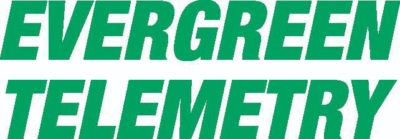CxEnergy technical presentations are approved for the following Continuing Education programs: AIA (LU), USGBC LEED General Education CE, ACG Certified CxAs, EMA certified EMPs, and AABC Certified TBEs & TBTs.In addition, most state P.E. programs accept AIA-approved LUs, check your local board to confirm.

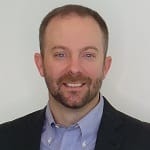
Case Study: New, Net-Zero Energy ASHRAE Headquarters
Ginger Scoggins, PE, CxA, FASHRAE, Engineered Designs, Inc.
Darren Draper, PE, CxA, LEED AP, Epsten Group
The new ASHRAE building, located in Technology Park in Peachtree Corners, is a 1970’s era 66,000 sq. ft. building that is being remodeled into a high-efficient, net-zero energy facility to become ASHRAE’s worldwide headquarters. During the course of the design of the project, the design and commissioning team encountered many envelope and system challenges involving the remodel of an older building and the effort to renovate it to meet the requirements of current ASHRAE 90.1 energy goals, as well as the challenge of designing to a stringent list of owner project requirements. This presentation will focus on those challenges and how they were addressed by the design and commissioning team in order to meet the project goals.
Learning Objective 1:
Through this case study the attendees will be able to understand the challenges associated with renovating an older building to achieve an aggressive energy target required by the building owner.
Learning Objective 2:
This presentation will provide attendees alike a greater understanding of the requirements of the new ASHRAE Net Zero Energy Design Guide for Office Buildings.
Learning Objective 3:
Attendees will be provided with information regarding the requirements of a building envelope to meet requirements of ASHRAE 90.1, Energy Standard for Buildings Except Low-Rise Residential Buildings.
Learning Objective 4:
This case study will review the inter-connectivity between the owner, design team and commissioning team in a lessons learned format for participant knowledge on future projects.

Microgrid Commissioning Case Study – “Microgrid, Macrogains”
Alex Mathers, PE, CxA, GMC Commissioning
Sharp HealthCare is San Diego County’s leading health care provider. Sharp is focused on delivering the highest quality patient-centered care, the latest medical technology and superior service. They have more than 2,700 affiliated physicians and 18,000 employees working within four acute-care hospitals, three specialty hospitals, three affiliated medical groups and a full spectrum of other facilities and services. Sharp Rees-Stealy Santee Medical Center is a new 86,000 SF facility consolidating multiple medical specialties into one destination for the residents of a lower income and underdeveloped community in east San Diego County. It offers primary and specialty care, urgent care, pharmacy, laboratory, mammography, optical shop, radiology, rehabilitation services, and diabetes and nutrition education. As part of Sharp Healthcare’s continued dedication to sustainable practices, the new project includes a power microgrid that will allow Sharp Rees-Stealy to generate solar power and save approximately $300,000 a year in electricity charges.
Learning Objective 1:
Have a basic comprehension of microgrids
Learning Objective 2:
Be familiar with the various microgrid operational scenarios
Learning Objective 3:
Understand real-world issues with the testing and implementation of a microgrid


The Future of Re-Commissioning, How to Prepare Your Facility to be IAQ Centric
Raj Setty, PE, CxA, Setty
Serene Almomen, PhD, Senseware
The goal of this presentation will be to inform the practitioners on how to prepare sensors and interpret readings for a IAQ centric HVAC system. The driving force for our industry has been energy efficiency which has been the predominant underlying engineering design dogma. This will now need to be balanced with a high level of indoor air quality in the “new normal”. The best way to balance IAQ and energy efficiency will be to deploy a suite of IAQ sensors to provide a data driven approach to proper HVAC operations.
The case study will go into technical detail of actual readings of PM2.5, CO2, temperature, TVOC’s and humidity which all paint a picture of the optimal air quality for the teaching space. As each of the readings modulate between good and unacceptable, proscribed actions are implemented to see if the IAQ readings improved. Simple paradigm shifts are forthcoming such as changing air filters based on particulate level in the occupant zone not the differential pressure (DP) on the air handler or a quarterly cycle. In another example, if CO2 levels do not dissipate according to our baseline algorithms then HVAC sequences shall flush the building with more fresh air above and beyond the prescribed occupied/unoccupied current sequences of operations.
From the ASHRAE epidemic task force HVAC guidance to actual implementation across several million sf of a school systems portfolio will be explored. Over a 100 schools in this school system had to be harden and a IAQ centric approach was implemented in the first phase of this effort. After all the filters were upgraded, UV-C installed and ventilation was increased, we enter phase 2 of the project. Phase 2 will be a daily monitoring of over a 1000 IAQ sensors across the portfolio. As the sensors register data in real time, IQA protocols are being developed for the building operators to take action upon in real time.
Learning Objective 1:
Provide an overview of an IAQ sensor array for optimum data gathering.
Learning Objective 2:
Describe the data mapping process and the process of integration into both a central BMS and
digital twin.
Learning Objective 3:
Understand the main variables we can monitor with low cost off the shelf sensors.
Learning Objective 4:
Provide a process description of how to adjust and rectify HVAC systems based on IAQ not
energy.
Learning Objective 5:
Balancing IAQ and energy optimization will be required for our future HVAC designs.

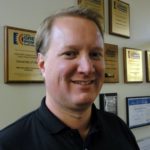
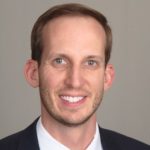
Progress vs Perfection – Developing the Best Building Envelope Commissioning Program
Stevan Vinci, CET, LEED Fellow, CxA+BE, BECxP, Morrison Hershfield Corporation
Jeff Wrigley, State of Utah
Rick Ziegler, PE, RRC, Morrison Hershfield Corporation
Currently across the industry and various owner groups there is a wide range of scope and technical expertise within the Building Envelope Commissioning (BECx) practice. Ineffective programs may not only fail to meet the owner’s performance requirements, but can be detrimental to the industry for perceived lack of value. While there are applicable BECx standards available, they are either watered down or improperly applied to projects. It is critical that the BECx process effectively verifies the project goals with clear value to the owner. The State of Utah is considered a leader among owner groups for implementing stringent building performance requirements and advanced BECx techniques with hundreds of buildings completed that have met the mandated project performance requirements. Steve, Rick, and Jeff will provide insight into the steps taken in developing the program and focus on Utah’s BECx process and technical approach to providing significant value to project teams that has demonstrated operational cost savings by up to 40%. The presentation will conclude with a project case study demonstrating the effectiveness of the BECx program.
Learning Objective 1:
Learn how to apply highly successful concepts from the State of Utah’s program to other institutions or projects.
Learning Objective 2:
Understand the history and analysis used to identify and standardize owner’s project requirements.
Learning Objective 3:
Understand key technical considerations to meet building envelope performance goals.
Learning Objective 4:
Identify air leakage and thermal performance goals for the building enclosure and the process to understand the impact on total building energy usage.
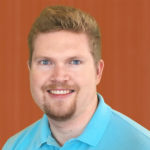

Evolving Commissioning Requirements in Building Energy Codes
Scott West, PE, PMP, LEED AP, ASHRAE BCxP, BEAP, BEMP, HFA
Greg Schluterman PE, CxA, LEED AP, ASHRAE BEAP & BEMP, HFA
This session will cover the evolving nature of commissioning requirements within the US energy codes. ASHRAE Standard 90.1 and the International Energy Conservation Code each take a different approach to commissioning requirements. Different project types will take different compliance approaches depending on the prevailing code year, but why? We’ll examine some of the project scenarios that result in different compliance requirements between the two codes and how commissioning is impacted.
To add to the mix, beyond-code programs such as the LEED rating system and International Green Construction Code also take different approaches to commissioning. How do commissioning practitioners make sure project scopes match jurisdictional requirements as well as owner expectations? Are there any major scope items that are falling through the cracks? We’ll address these questions and draw comparisons to help sift through the mire.
Learning Objective 1:
Learn how commissioning requirements in the energy codes have evolved over the years.
Learning Objective 2:
Learn how ASHRAE 90.1 and IECC commissioning requirements overlap and differ.
Learning Objective 3:
Learn how base energy code commissioning requirements compare with beyond-code requirements.
Learning Objective 4:
Learn what commissioning practitioners need to know about code-mandated commissioning to ensure overall project success.

Operating with Persistence: Monitoring-Based Cx & HVAC Analytics
Brent Grimm, PMP, ETC Group
This presentation explores the application of HVAC Analytics on energy efficiency projects, which previously would have been at risk for persistence. Equipment and its operation will degrade over time without a cost-effective means of monitoring and a staff structure to make improvements and help good performance persist. Using data, rolled up to key performance indicators (kpis), to monitor performance allows staff to easily assure systems are not drifting out of optimal performance. Analytics serves another viable role for an organization by informing design of new systems and equipment replacements. And finally, analytics readily support Environmental Health and Safety requirements; another critical aspect of building performance. We will talk about how owners are thinking about and responding to known barriers, including lessons learned, and steps being taken to address them.
Learning Objective 1:
Structure an organization in a way that benefits from HVAC analytics software and monitoring-based commissioning services. Being flexible as these services evolve.
Learning Objective 2:
Use analytics software and MBCx services to: a. Support Environmental Health and Safety (EHS) efforts. b. Focus manpower efforts to improve occupant comfort. c. Reduce operating costs. d. Improve equipment reliability.
Learning Objective 3:
Identify operational needs (resources, funding) to respond to findings of monitoring based commissioning
Learning Objective 4:
Discuss best practices in leveraging MBCx services with modern data analytics software to address compliance and occupant comfort.


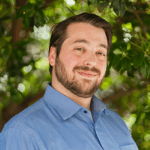
Remote Energy Management During COVID-19: Utilizing Benchmarking Tools to Target Cost Savings Opportunities
Eric Noller, PE, Energy Resources Integration, LLC
Carolyn Szum, Lawrence Berkeley National Laboratory
Ethan Clifford, Energy Resources Integration, LLC
Building and property managers are constantly evaluating various investments into their building and tenant modifications. These investments come with their own set of challenges such as capital, complexity of the retrofit, and available time to install due to tenant occupancy. It is common to use consultants or vendors to identify these potential upgrades which may be costly or have a bias approach to their evaluation. Lawrence Berkeley National Laboratory developed BETTER (Building Efficiency Targeting Tool for Energy Retrofits) to help building and property managers identify and estimate utility cost savings using a free building benchmarking tool. The tool utilizes minimal inputs to generate temperature dependent change point models which identify optimal operational and technological improvements. The results help customers make the most cost-effective energy efficiency investments and realize actual savings.
In comparison to other benchmarking tools such as Energy Star, the BETTER tool takes minutes to set up and identify energy saving opportunities without the need to hire a consultant. The presentation will discuss results obtained from the tool and how it has been leveraged for individual building benchmarking for site assessments. A California state agency has piloted the tool along with Energy Resources Integration (ERI). The presentation will provide an in-depth review of the BETTER tool’s user interface and output features. The presentation will demonstrate how simple the tool is to use to assess portfolios of buildings.
Learning Objective 1:
Understanding strategies during COVID-19 for performing remote data analytics.
Learning Objective 2:
How to leverage benchmarking tools for commercial building energy management.
Learning Objective 3:
How to quickly assess portfolios of buildings for targeting energy efficiency strategies.
Learning Objective 4:
Determining cost savings opportunities using readily available building information.

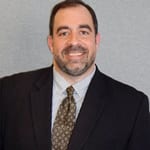
Guideline 3rd Edition: Understanding Emergency Power System Commissioning
Jesse Felter, SSRCx
Mark A. Gelfo, PE, CxA, LEED Fellow, EMP, TLC Engineering Solutions
Discuss emergency power system commissioning methodology for different construction and installation types, significance of ACG Commissioning Guideline 3rd Edition.
Learning Objective 1:
Definitions relating to the commissioning of EPS and EPSS.
Learning Objective 2:
Differentiate emergency power system commissioning expectations with respective phases of construction.
Learning Objective 3:
EPSS Sequence of Operation (SOO).
Learning Objective 4:
Integrated System Testing (IST).



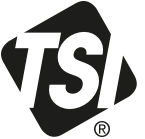




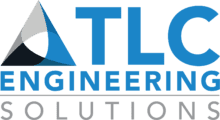

 CxA certification is open to independent industry professionals who meet all education and experience prerequisites and implement commissioning processes in new and existing buildings.
CxA certification is open to independent industry professionals who meet all education and experience prerequisites and implement commissioning processes in new and existing buildings. The Energy Management Process Seminar is designed to help candidates understand the energy management process and how it can be applied and serves as the final preparation for the Energy Management Professional (EMP) exam.
The Energy Management Process Seminar is designed to help candidates understand the energy management process and how it can be applied and serves as the final preparation for the Energy Management Professional (EMP) exam.






